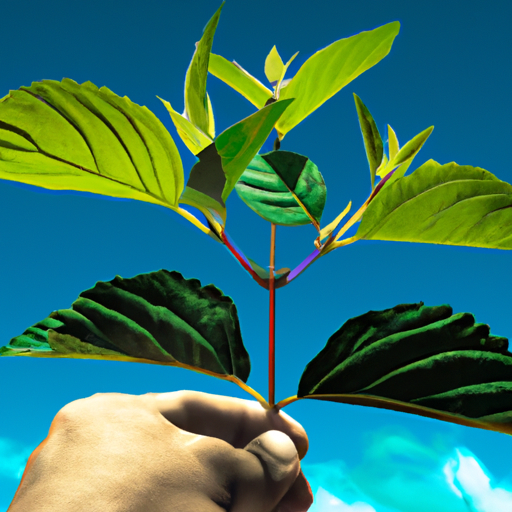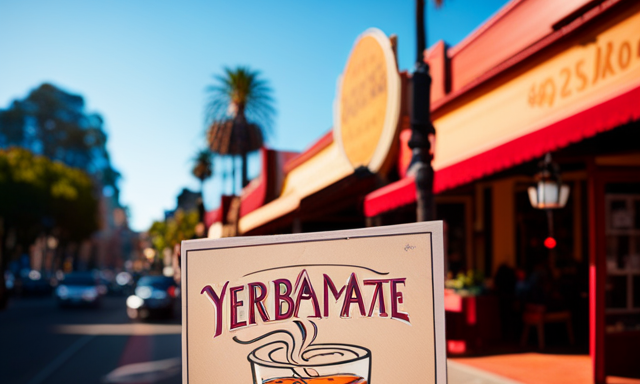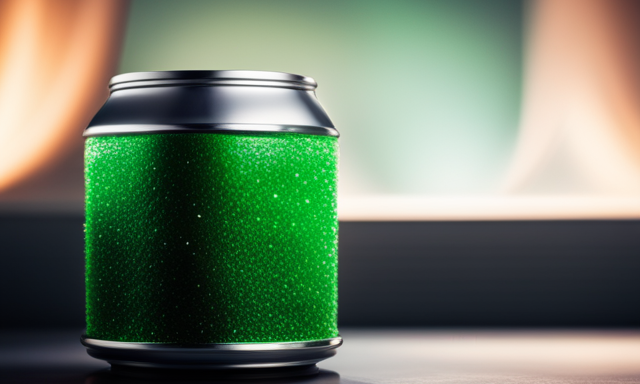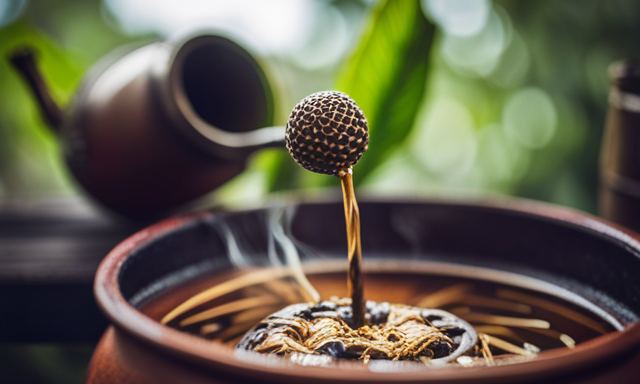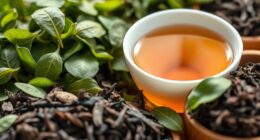I’ve consistently been intrigued by the origins of yerba mate, a beloved beverage in South America that has recently become popular across the globe. Having appreciated its distinct flavor and stimulating benefits, I was eager to explore its roots and the production process.
Yerba mate is a type of tea made from the leaves of the Ilex Paraguariensis plant, which is native to South America. It’s been consumed for centuries by indigenous communities in Argentina, Uruguay, Paraguay, and Brazil as a social and medicinal beverage. In recent decades, its popularity has spread beyond these countries due to its reported health benefits and unique flavor profile.
In this article, we’ll explore the history of yerba mate, how it’s produced today, its different varieties, health benefits, cultural significance around the world and efforts towards sustainability and conservation.
Key Takeaways
- Yerba mate is a herbal drink made from the leaves of the Ilex Paraguariensis plant, native to South America.
- It has been consumed for centuries by indigenous communities in Argentina, Uruguay, Paraguay, and Brazil as a social and medicinal beverage.
- Yerba mate production and trade have played an important role in the economy of several South American countries.
- Yerba mate has a rich history dating back to the indigenous Guaranàpeople and is still considered a symbol of friendship and hospitality in many parts of South America.
History of Yerba Mate
Did you know that yerba mate has been enjoyed for centuries in South America, with a rich history dating back to the indigenous Guaranà people? The cultural significance of yerba mate cannot be overstated. It has been used as a social and ceremonial drink among the Guaranà people since pre-Columbian times.
In fact, it is still considered a symbol of friendship and hospitality in many parts of South America. The economic impact of yerba mate is also significant. Yerba mate production and trade have played an important role in the economy of several South American countries, including Argentina, Brazil, Paraguay, and Uruguay.
In fact, yerba mate is one of the most important export crops in these countries. Its popularity has led to the creation of numerous jobs and businesses involved in its cultivation, processing, packaging, and distribution. Yerba mate is derived from the leaves of the ilex paraguariensis plant which grows primarily in South America.
This plant belongs to the holly family and can grow up to 15 meters tall. Its leaves are harvested by hand and then dried over fire before being ground into a fine powder or cut into small pieces for brewing. With such an interesting history behind it, it’s no wonder that yerba mate continues to be popular around the world today!
The Ilex Paraguariensis Plant
I’m fascinated by the Ilex Paraguariensis plant, which is the source of yerba mate. This plant has some unique botanical characteristics that make it stand out, such as its evergreen leaves and small flowers.
Additionally, growing and harvesting methods for this plant require special care to ensure the highest quality yerba mate is produced.
Botanical Characteristics
You’ll be interested to know that yerba mate is an evergreen tree or shrub that can grow up to 50 feet tall! The plant has a deep taproot system and its leaves are oval-shaped, with serrated edges.
The flowers of the Ilex Paraguariensis plant are small and white, while its fruit is a red berry.
The uses of yerba mate are varied, from being brewed as a tea-like beverage to being used in traditional medicine. It contains several medicinal properties such as antioxidants, anti-inflammatory agents, and caffeine.
Yerba mate has been known to boost energy levels, improve mental focus and clarity, aid digestion, and even promote weight loss. With all these benefits in mind, it’s no wonder why growing and harvesting methods for this plant have become so important!
Growing and Harvesting Methods
Growing and harvesting yerba mate requires specific techniques that ensure the plant’s optimal health and potency. To begin with, yerba mate is grown in regions that have a subtropical climate with abundant rainfall, such as Argentina, Brazil, and Paraguay. The plant is usually propagated from cuttings or seeds and takes around four years to reach maturity.
During this time, the plants require regular pruning to maintain their shape and promote new growth. Once matured, the leaves are harvested by hand-picking each one individually from the branches of the plant. This method ensures that only the freshest leaves are used in production.
After harvest, traditional drying methods are employed to remove excess moisture from the leaves while preserving their natural flavor profile. Once dried, the leaves can be processed into various forms such as loose leaf tea or tea bags. Additionally, many growers seek organic certification for their product to meet growing consumer demand for eco-friendly products.
With an understanding of how yerba mate is grown and harvested, comes an appreciation for its unique production process. From cultivation to packaging, each step plays a crucial role in creating a high-quality product that delivers on taste and nutritional benefits.
The Production Process
The production process of yerba mate involves several stages before the final product is ready for consumption. Production techniques vary depending on the region and the brand, but all follow a similar process.
The first step in production is to dry the leaves and stems, which are then aged to enhance flavor profiles. After aging, the leaves and stems are crushed into small pieces.
Next, these small pieces are roasted to produce a unique taste and aroma. This roasting process can be done using different methods such as wood or gas-fired ovens or by smoking with hardwoods like quebracho or carob trees. Roasting also helps to remove any remaining moisture from the leaves and stems.
After roasting, yerba mate goes through a sorting and packaging stage where it is packed into bags or containers for distribution.
Varieties of yerba mate differ based on factors like where it’s grown, how it’s processed, and what additives (if any) are used during production. In the subsequent section about ‘varieties of yerba mate,’ we’ll dive deeper into these differences to explore what makes each type unique.
Varieties of Yerba Mate
There are numerous types of yerba mate available, each with its distinct flavor and aroma due to differences in the production process. Yerba mate varieties can differ based on factors such as the region it is grown in, the type of plant used, and how long it has been aged. As an avid yerba mate drinker, I have tried several varieties and compiled a table below outlining some of my favorites and their tasting notes.
| Variety | Tasting Notes |
|---|---|
| Argentinean | Bold and earthy with a slight bitterness |
| Brazilian | Smooth with a hint of sweetness |
| Paraguayan | Strong and smoky with a nutty aftertaste |
| Uruguayan | Mild and grassy with a floral finish |
Each variety offers something unique to the drinking experience. For example, Argentinean yerba mate tends to be bold and earthy, while Brazilian yerba mate has more subtle hints of sweetness. Paraguayan yerba mate is known for its strong smokiness with a nutty aftertaste, while Uruguayan yerba mate has a mild grassiness that finishes off with floral notes.
With so many different options available, there is truly no shortage of flavors to explore when it comes to yerba mate. It’s fascinating how one plant can produce such diverse tasting profiles based on where it’s grown and how it’s processed. Now that we’ve explored the varieties in depth, let’s move onto another exciting aspect – health benefits!
Health Benefits of Yerba Mate
Get ready to discover how drinking this South American beverage can benefit your mind and body! Yerba mate is not only a delicious and energizing drink but also has numerous health benefits.
Here are three ways that drinking yerba mate can improve your overall well-being.
-
Boosts Mental Focus: Yerba mate contains caffeine, theobromine, and theophylline which stimulate the brain and enhance mental focus. These natural compounds found in yerba mate are known to increase alertness, productivity, and concentration levels.
-
Aids Digestion: Drinking yerba mate after meals can help with digestion due to its high content of polyphenols. Polyphenols are antioxidants that have been shown to aid in digestion by reducing inflammation in the digestive tract.
-
Cultural Significance: Yerba mate is deeply embedded in South American culture, particularly among indigenous people who’ve used it for centuries as a communal beverage during rituals and ceremonies. Sharing a gourd of yerba mate with friends or family is considered a symbol of friendship and unity.
Brewing techniques play an important role in the taste and quality of yerba mate, so it’s essential to learn how to brew it properly. In addition to its cultural significance, understanding the various brewing methods can also provide a unique experience for those seeking to explore different tastes from around the world.
Yerba Mate Around the World
I’m excited to delve into the topic of yerba mate consumption around the world.
Having grown up in South America, I’m well-aware of how ingrained yerba mate is in our culture and daily lives.
However, in recent years, I’ve also noticed a growing popularity for this herbal drink in other regions such as North America and Europe.
It’ll be interesting to explore the different consumption patterns across these diverse regions and what factors contribute to its increasing popularity.
Consumption Patterns in South America
Consumption patterns for yerba mate in South America vary widely depending on the region. Here are some observations I’ve made during my travels:
-
In Argentina, it’s common to see people carrying around a thermos of hot water and a mate gourd wherever they go. They’ll refill their gourd multiple times throughout the day, sharing with friends or family members who happen to be nearby.
-
In Paraguay, tereré – a cold version of yerba mate – is more popular than its hot counterpart. It’s especially refreshing during the scorching summer months.
-
Uruguayans have a unique way of preparing their mate, which involves using a hollowed-out pumpkin as the vessel instead of a gourd. This imparts a distinct flavor that sets Uruguayan mate apart from other varieties.
-
In Brazil, chimarṛo Рanother variation of yerba mate Рis often consumed in groups using a shared bomba (straw). The tradition has deep roots in southern Brazil and is seen as an important part of ga̼cho culture.
As yerba mate gains popularity outside of South America, it’ll be interesting to see how these cultural customs evolve and adapt in new regions.
Growing Popularity in Other Regions
With the rise of health-conscious consumers, many are turning to herbal tea alternatives such as yerba mate. This trend is not limited to South America, where yerba mate has been a staple for centuries, but is also spreading globally. In North America and Europe, in particular, yerba mate’s popularity has surged due to its perceived health benefits and unique flavor profile.
Despite its growing global trend, there are regional variations in how yerba mate is consumed. In Argentina and Uruguay, for example, it is often drunk from a gourd with a metal straw called a bombilla. In Paraguay, it is typically served cold with added sugar or fruit juice. Yerba mate also holds cultural significance in these regions as it is often shared among friends and family as a social ritual.
However, with the increasing demand for yerba mate comes concerns about its environmental impact and sustainability practices. As such, brewing techniques that minimize waste and promote ethical sourcing are becoming more popular among conscious consumers.
As we delve further into the culture and traditions surrounding yerba mate consumption, we can gain a deeper understanding of just how significant this drink is to those who drink it regularly.
Yerba Mate Culture and Traditions
From the gourd-shaped mate cup to the act of sharing and passing it around, yerba mate culture is steeped in communal traditions. Yerba mate ceremonial rituals are an integral part of this culture.
It’s customary to pass the mate cup clockwise, starting from the oldest person in the group. The first round is usually shared among everyone present, and subsequent rounds are offered to each person individually.
Yerba mate social etiquette also plays a significant role in this culture. One must never touch the bombilla (metal straw) with their hands or move it when it’s placed inside the gourd. Additionally, slurping sounds while drinking yerba mate are not only tolerated but encouraged as they signify that one enjoys the drink.
Other cultural practices include using hot water instead of cold water to steep yerba mate leaves and adding sugar or honey according to one’s preference. Furthermore, some communities have specific beliefs regarding who can prepare yerba mate or where it should be consumed.
These traditions highlight how important yerba mate is to South American communities beyond its medicinal properties and caffeine content. As we explore ways to sustainably cultivate and harvest yerba mate for global consumption without harming local ecosystems, we must also acknowledge and respect these cultural practices that have been passed down for generations.
Sustainability and Conservation
To preserve the delicate balance of the South American ecosystem, you must consider sustainable practices when harvesting and cultivating yerba mate. Sustainable farming is key to ensuring that this revered plant remains available for future generations. This means using eco-friendly techniques that minimize harm to the environment while still producing high-quality yerba mate.
One important aspect of sustainable farming is wildlife conservation. Yerba mate grows in areas that are home to countless species of animals and birds, many of which rely on the plant for their survival. By using sustainable farming practices, we can ensure that these animals continue to thrive alongside the yerba mate plants they call home.
In addition to preserving local wildlife populations, sustainable farming also helps keep soil healthy and protects water sources from contamination. By choosing brands that prioritize sustainability, we can enjoy our yerba mate knowing that we’re doing our part to support a healthier planet.
As consumers, we have the power to influence how products are made and where they come from let’s use it wisely!
Frequently Asked Questions
What is the best way to prepare and consume Yerba Mate?
When it comes to preparing and consuming yerba mate, the traditional utensils and cultural significance play a crucial role.
I remember visiting my friend’s family in Argentina and being welcomed with a warm cup of mate. The gourd, or ‘mate’, was filled with loose yerba mate leaves, hot water was added (not boiling!), and a metal straw called ‘bombilla’was inserted into the mix.
As we passed the gourd around, taking turns sipping from the same straw, I felt an instant sense of camaraderie. This communal experience is at the core of yerba mate culture.
To prepare it properly, one must use patience and care – allowing the leaves to steep for just the right amount of time before sipping through the bombilla. Even as more modern methods emerge (like tea bags), using traditional utensils honors this age-old tradition and enhances both flavor and ritualistic significance.
Are there any negative side effects of consuming Yerba Mate?
When it comes to consuming yerba mate, there are potential health risks that need to be considered. Medical concerns include the risk of developing esophageal cancer due to long-term consumption of hot beverages and the presence of carcinogenic compounds in yerba mate.
Additionally, excessive consumption can lead to digestive issues such as stomach cramps and diarrhea, as well as increased blood pressure and heart rate. Despite these potential risks, yerba mate has a significant cultural significance in many South American countries where it is consumed regularly as part of social gatherings and traditions.
Its use dates back centuries among indigenous communities who believed it had medicinal properties for a range of ailments. Yerba mate continues to be an important part of daily life for millions of people around the world, but it’s important to consume it in moderation and consider any potential medical concerns.
How does Yerba Mate compare to other caffeinated beverages like coffee and tea?
Comparing yerba mate to coffee and tea is like comparing a rugged mountain climb to a leisurely hike through the woods. Yerba mate provides a unique combination of caffeine, theobromine, and other natural compounds that provide a sustained energy boost without the jitters or crash often associated with coffee.
In contrast, tea offers a gentler lift with less caffeine overall. While both coffee and tea have their place in my daily routine, I find myself turning to yerba mate when I need more focus or endurance for longer periods of time.
Overall, yerba mate stands out as an energizing beverage option that offers its own distinct flavor and benefits compared to coffee or tea.
Is Yerba Mate a popular drink in any particular regions or countries?
Yerba mate is a beloved drink in many parts of the world, particularly in South America. Its cultural significance runs deep, with social customs often revolving around sharing a gourd filled with the brewed leaves among friends and family.
In countries like Argentina, Uruguay, and Paraguay, yerba mate can be found in almost any social setting – from casual gatherings to formal business meetings. The drink’s popularity has even spread beyond its traditional borders; yerba mate can now be found in specialty shops across the globe and is gaining recognition for its unique taste and health benefits.
Overall, yerba mate’s strong cultural ties and versatility make it a beloved beverage enjoyed by many.
Can Yerba Mate be used for anything other than a beverage?
Let me tell you, yerba mate isn’t just a beverage—it’s a versatile ingredient that can add depth and complexity to many recipes.
From marinades to desserts, yerba mate can be used in a variety of ways to elevate your culinary creations. Not only does it add flavor, but yerba mate also boasts numerous health benefits for the skin when applied topically.
Its high antioxidant content makes it an excellent addition to skincare products such as face masks or scrubs.
So next time you brew up a cup of yerba mate, consider saving some for your kitchen experiments or beauty routine!
Conclusion
In conclusion, I’ve learned about the history, production process, varieties, health benefits, global presence, and cultural significance of Yerba Mate. I appreciate this unique beverage as a symbol of tradition and community that’s been passed down through generations. It’s truly magical how it brings people together to share stories and connect.
Furthermore, the sustainability efforts being made to conserve the Ilex Paraguariensis plant are crucial to ensure future generations can continue to enjoy this drink. Yerba Mate represents more than just a caffeinated drink; it embodies a way of life that values connection with others and respect for nature.
So next time you sip on your cup of Yerba Mate, take a moment to appreciate its rich history and the positive impact it has had on so many cultures around the world.

